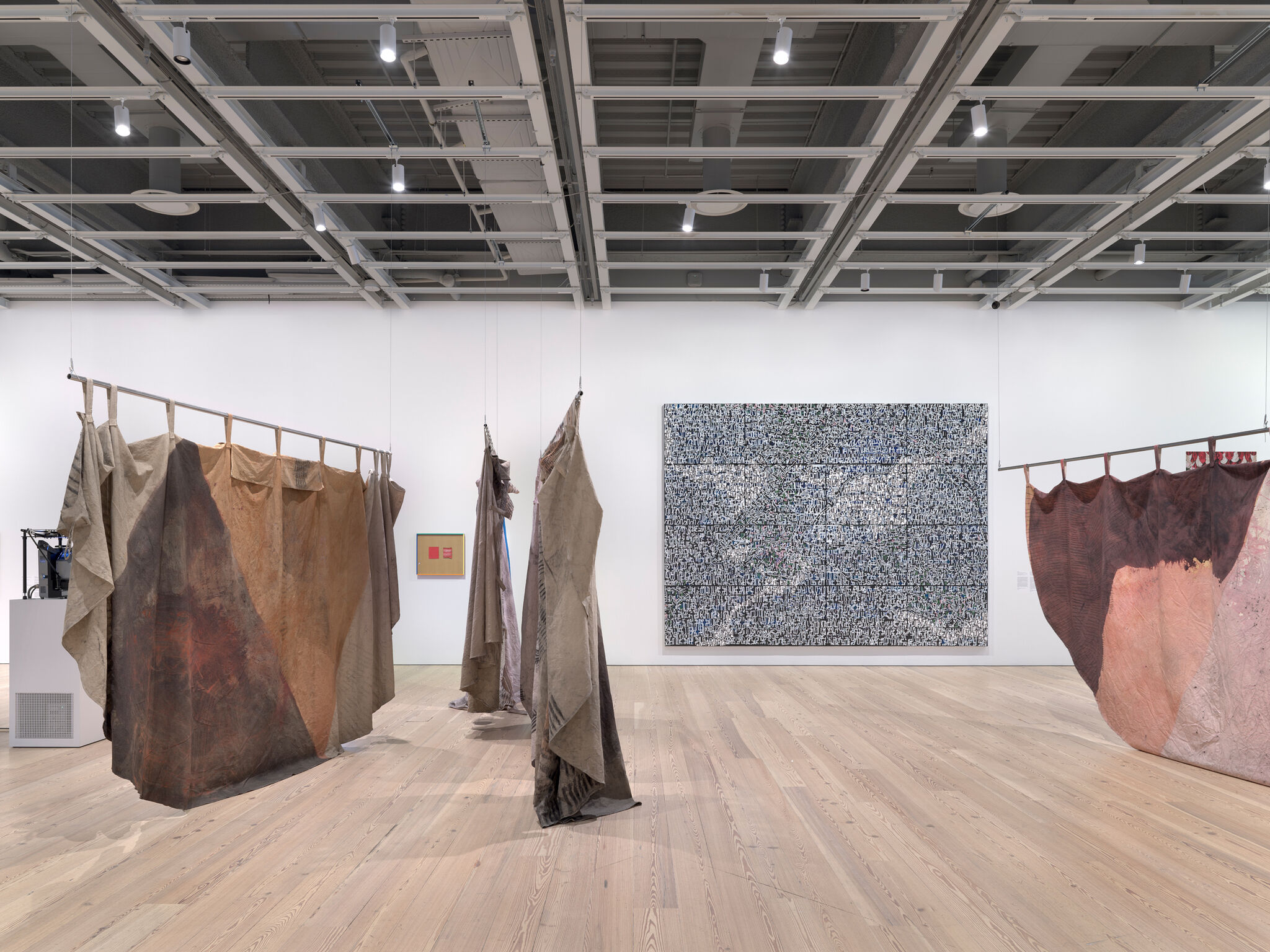Whitney Biennial 2022: Quiet as It’s Kept | Art & Artists
Apr 6–Oct 16, 2022
Whitney Biennial 2022: Quiet as It’s Kept | Art & Artists
Duane Linklater
34
Floor 5
Born 1976 in Treaty 9 Territory (Northern Ontario, Canada)
Lives in North Bay, Canada (Robinson Huron Treaty Territory)
Omaskêko Ininiwak
Duane Linklater works with patterns used for teepee covers. He leaves the material outside to accumulate imprints of the land and then uses organic matter—from sumac dye to flowers—to create surface, image, and texture. The finished works are manipulable. He sees a direct connection between the possibility of reimagining the work and ideas of Indigenous sovereignty and survival. Abstraction also allows Linklater to accommodate subjects whose severity and magnitude are impossible to represent—including genocide and residual violence. These most recent works bear evidence of written syllabic characters from Ininîmowin, the Cree language. The artist has worked with his grandmother, Agnes Hunter, on translation projects that preserve Indigenous practices and project them into the future.
Selection from the series mistranslate_wolftreeriver_ininîmowinîhk, 2022
-
0:00
Duane Linklater, Wintercount
0:00
Duane Linklater: My name is Duane Linklater, and I’m originally from Moose Creek First Nations, which is located in Treaty 9 Territory in Northeastern Ontario situated along the southern coast of James Bay.
Narrator: Linklater uses pigments that have been important to Indigenous artists, including sumac, charcoal, and cochineal. He’s painted them onto linen canvas that will be shifted and rearranged over the course of the Biennial.
Duane Linklater: These are teepee covers. They’re not functional teepee covers, but I think that the idea is there. There’s something important about these works and their ability to articulate a change, or their ability to articulate a fluctuation of time and space. And that’s sort of originating from their original uses, as teepee covers, as this sort of very, very flexible mode of architecture, this flexible mode of being able to move from one place to another, according to the situation of the environment.
The series is called Wintercount. And so in my own culture, my Omaskeko Cree culture that when we ask each other this question of how old are you? And when we ask each other that question in Cree, if we were to translate, that would literally be saying, how many winters are you? If we are looking at a lifetime of a person, that person is half winter, the sort of way I look at it, right? And so this really beautiful way to think about the presence of winter. In this case, there were certain things that I’ve been thinking about over the past three or four years, five years, and that have made their way into the work. For example, I think one of the important ones this past summer in Kamloops, they uncovered a number of unmarked graves of children who went to residential school.
Narrator: The Canadian Truth and Reconciliation Commission has described the residential schools as a central element in Canadian policy on Indigenous people for over a century. Children were taken away from their families in an effort to force assimilation and erase Indigenous cultures. Thousands of unmarked graves have been uncovered around Canada, and the search for more continues. In November of 2021, the Department of the Interior announced plans to begin identifying the unmarked graves that exist at similar schools in the United States.
Duane Linklater: Myself, I didn’t attend residential school, but many of my family members were forced to attend residential schools. And it had a profound impact on my family, and part of what it is that’s happening in here, and part of making this work, being able to articulate myself, and being able to speak and make work, make choices, free, open choices with the work seems important in light of this historical context.

